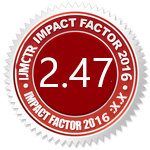Abstract :
Underwater Photography plays a vital role in underwater & ocean bed exploration. Also underwater image acquisition is crucial for autonomous underwater vehicles, & has an important significance in research, rescue, & exploration under ocean bed. Underwater Imaging possessed a different kind of challenge comparison to conventional photography. The equipment used for underwater photography should be water proof & resistant to water damage, but should simultaneously provide a clear field of view. Major photographic challenges involve low light at higher depths, refraction due to water density, show, blurring due to motion & water ripple. The proposed system presents a comprehensive GUI based system to correct underwater image artifacts by employing Image contrast Enhancement Techniques, Multiple Filters including custom filtering, Blind Deblurring, CLACHE Enhancement, Background Estimation & RGB-HSI Average Histogram Techniques.



